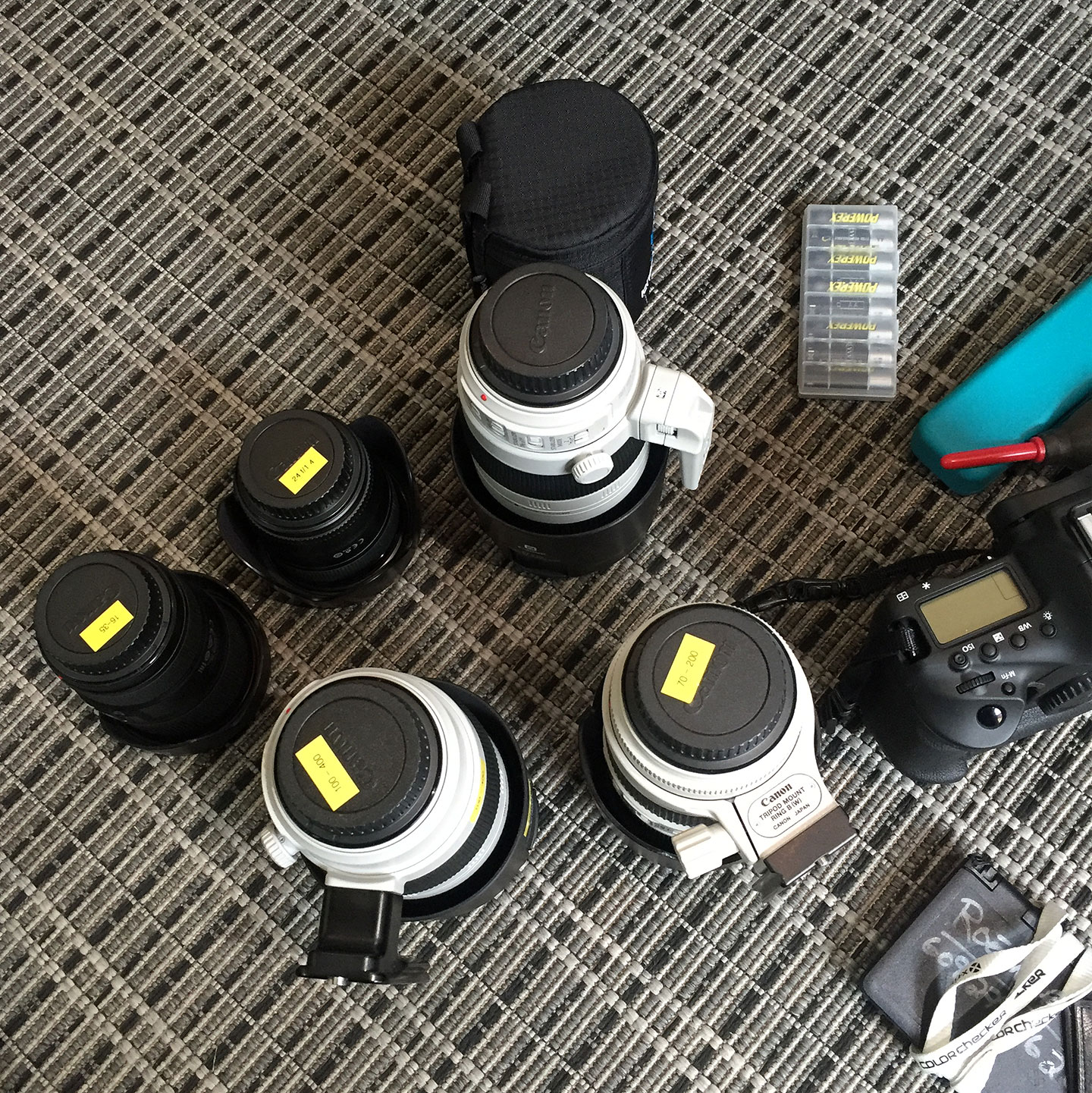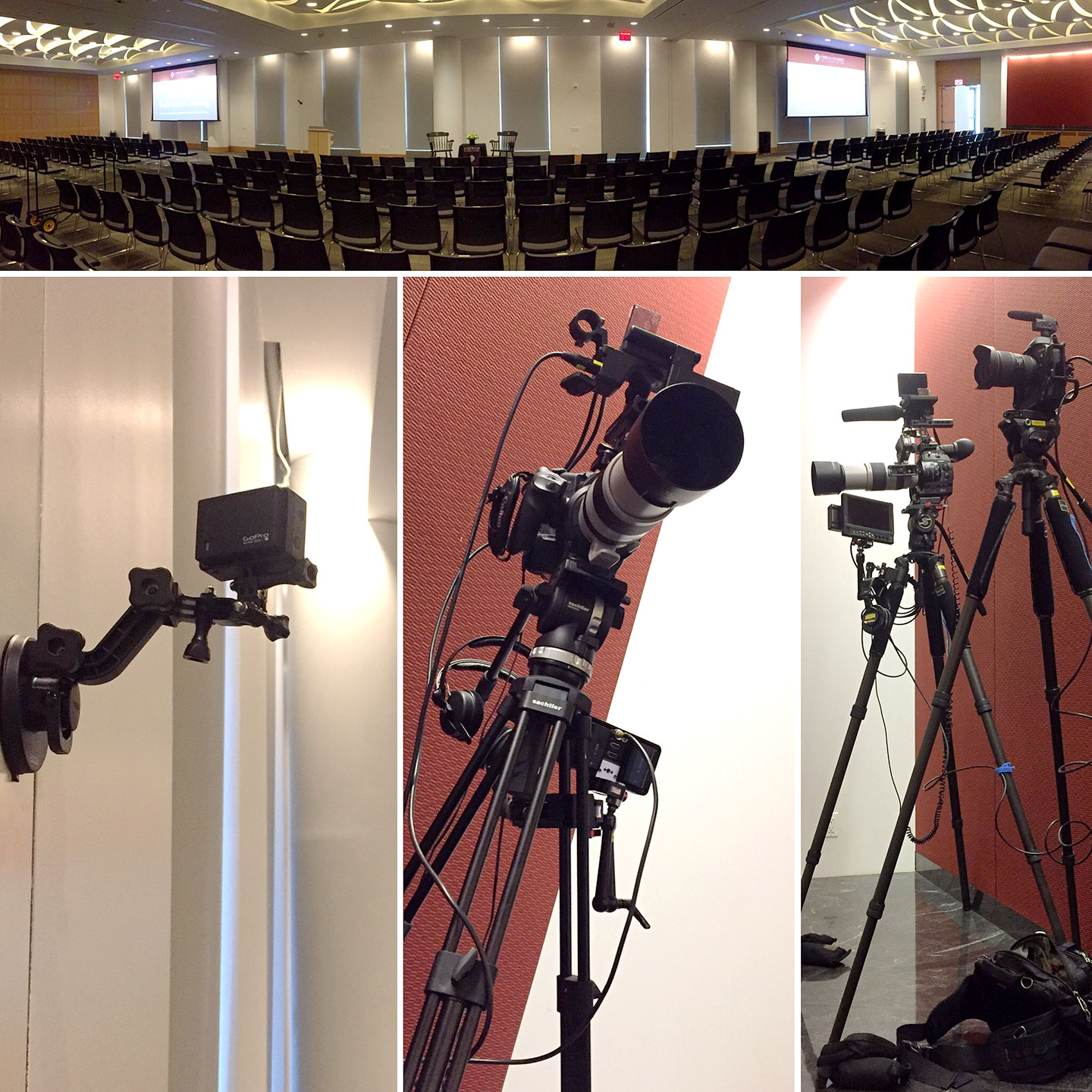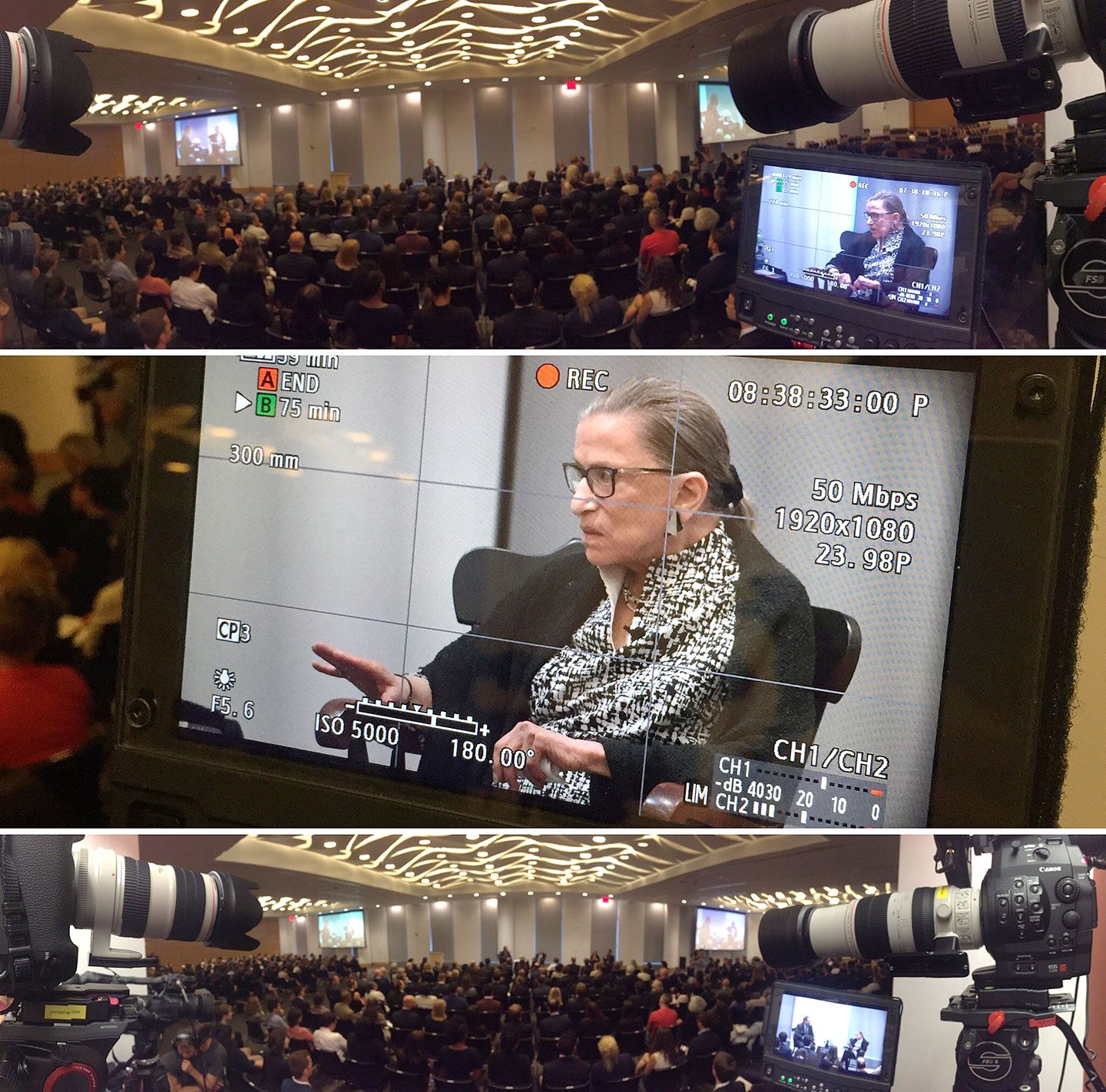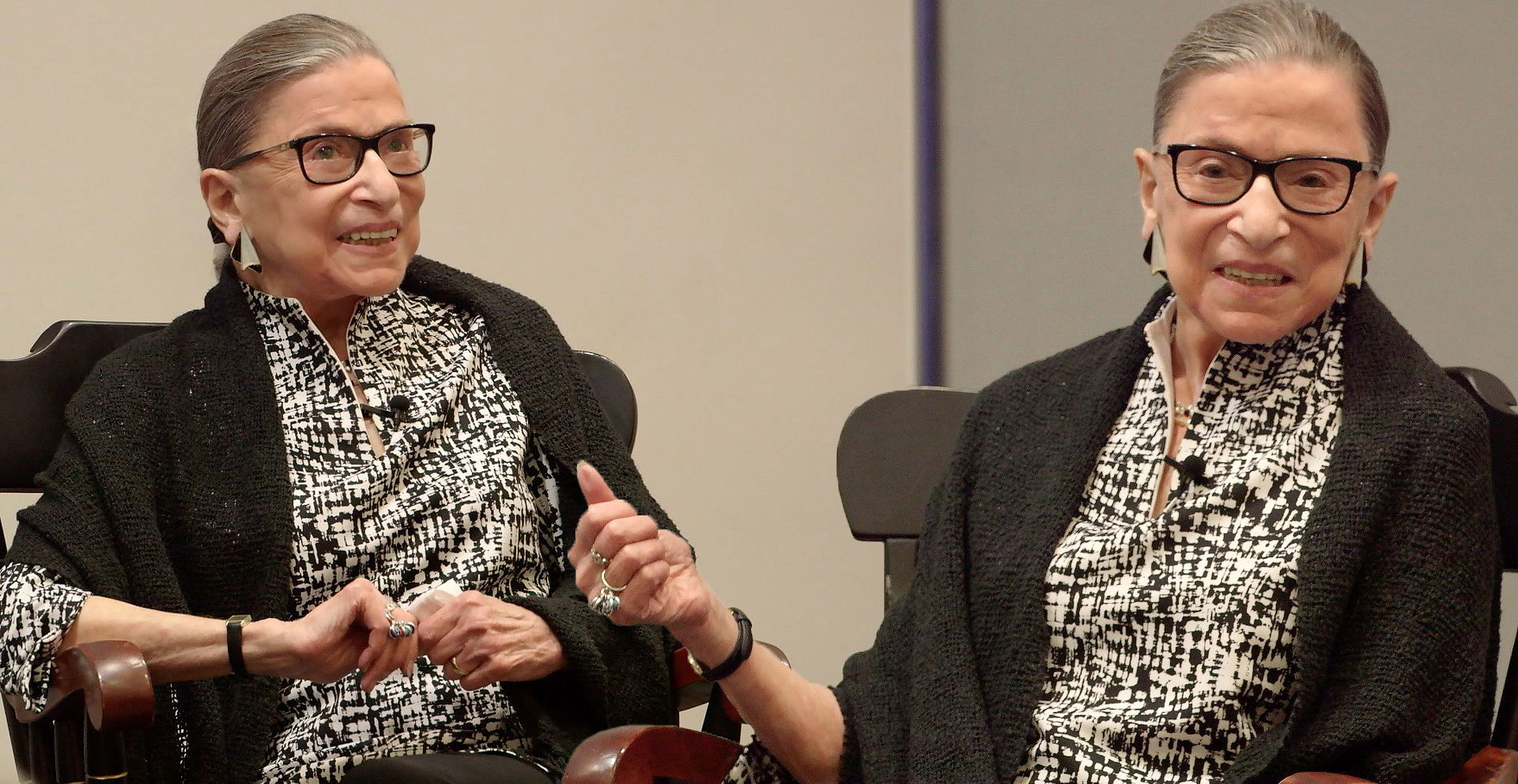This past September I had the honor of filming United States Supreme Court Associate Justice Ruth Bader Ginsburg’s visit to Fordham Law School. The context of the visit was as part of a lecture series but rather than Ginsburg lecturing, the event was structured as a casual conversation. Ginsburg spoke before an audience of over 300 with one of her former clerks moderating, Fordham Law Professor Aaron Saiger.
The entire ninety-minute interview can be found here. I also created a series of short social media breakout clips and a highlight reel. All done to help maximize the reach of Ginsburg’s visit.
Here is the highlight reel:
Notorious RBG Highlights from Jon Roemer on Vimeo.
Every project has its own unique set of demands and challenges. On this project, video was contracted after the room had been laid out and the seats assigned. So, with the space filled to capacity, rearranging seating to accomodate cameras or to add lighting was not an option.

Also, Ginsburg and Saiger were to sit on a slightly raised stage, only ~8″ higher than the floor. This meant that there was a good possibility that the justice would be blocked from view by the audience members seated in the rows closer to the stage.
What to do? First was to exercise control over what I could. No matter how many cameras I used Ginsburg was the focus and with the camera positions limited to straight on and camera left (stage right), I asked that she be seated to camera right. This ensured that if anything she favored camera left (her body position turned toward the interviewer) and none of the cameras would see her from too oblique an angle.
Second, I asked that all of the window shades be drawn. These were on the back wall, behind the subjects, and facing the cameras. Drawing the shades guaranteed consistency in the color and in the amount of light present over the course of the event which took place from late afternoon through twilight.

Normally, with a two-person interview you want at least three cameras. One for the two-shot, showing the participants together, and then one each for each individual. That was the case here but with a slight tweak. Justice Ginsburg was the main attraction and given the unknowns – how she would sit, how visible she would be, if she spoke more to Saiger or to the audience – it was best to cover her with both of the individual cameras.
So, the primary setup was three cameras with two covering her medium to tight. The third camera would get a two-shot and also some wider coverage. To add flexibility in case I wanted to re-frame the two-shot or crop down to Saiger in post, I had the third camera shoot 4K while the others shot 1080.
I also added a fourth camera, a GoPro, to have a reverse angle showing the speakers and the crowd. This was suction-cup mounted on the back wall, just above and to the left of the podium. It saw the podium, the stage, and the audience.
Audio was done via the in-house feed. The house tech took care of miking the subjects. As audio back-ups I had shotguns on the primary cameras, the two tighter cameras also got the house feed, and I recorded the house feed direct into a Zoom H4n audio recorder. The GoPro also records its own audio track.
This was setup and run by two camera operators, myself and Dan Phakos. It sounds like a lot but the GoPro ran on its own and the 4K camera getting the two-shot only needed minimal attention. Between all four cameras we were covered if any one of them needed to be down for new media, a new battery, or in the case of the 4K camera, a lens swap.

The cameras used were two Canon C300s for the medium and tight shots of Ginsburg. Each had a Canon 100-400 f/4.5-5.6L II lens. The 4K footage was shot on my Canon 1DX Mark II. That camera used a Canon 70-200 f/2.8L II and a Canon 16-35 f/4L lens.
The center camera location had the 1DX Mark II and one of the C300s next to each other. I ran both of them by standing in between them. I was able to monitor the picture from each on one 7″ external monitor, switching to feed from one or the other via the monitor’s input switch.
One change we made on-site, once we realized we had to be higher up to be certain of seeing the justice, was to take advantage of large marble-topped built-in banquets in the rear of the room. They provided a means of getting the cameras a good 11′ above the floor.
Post was done in FCPX. All of the camera tracks and the audio recorded on the Zoom were synched in a multicam timeline. The Canon C300s used Wide DR as the picture profile. The Canon 1DX Mark II used a Neutral based profile where I had turned down the sharpness and the contrast.
The GoPro was set to 2.7K resolution and manual exposure. I fixed the GoPro’s fisheye view in post as well as tweaking the image to correct the perspective.

